Designer Sebastian Errazuriz opens up his South Bronx studio full of functional art and furniture
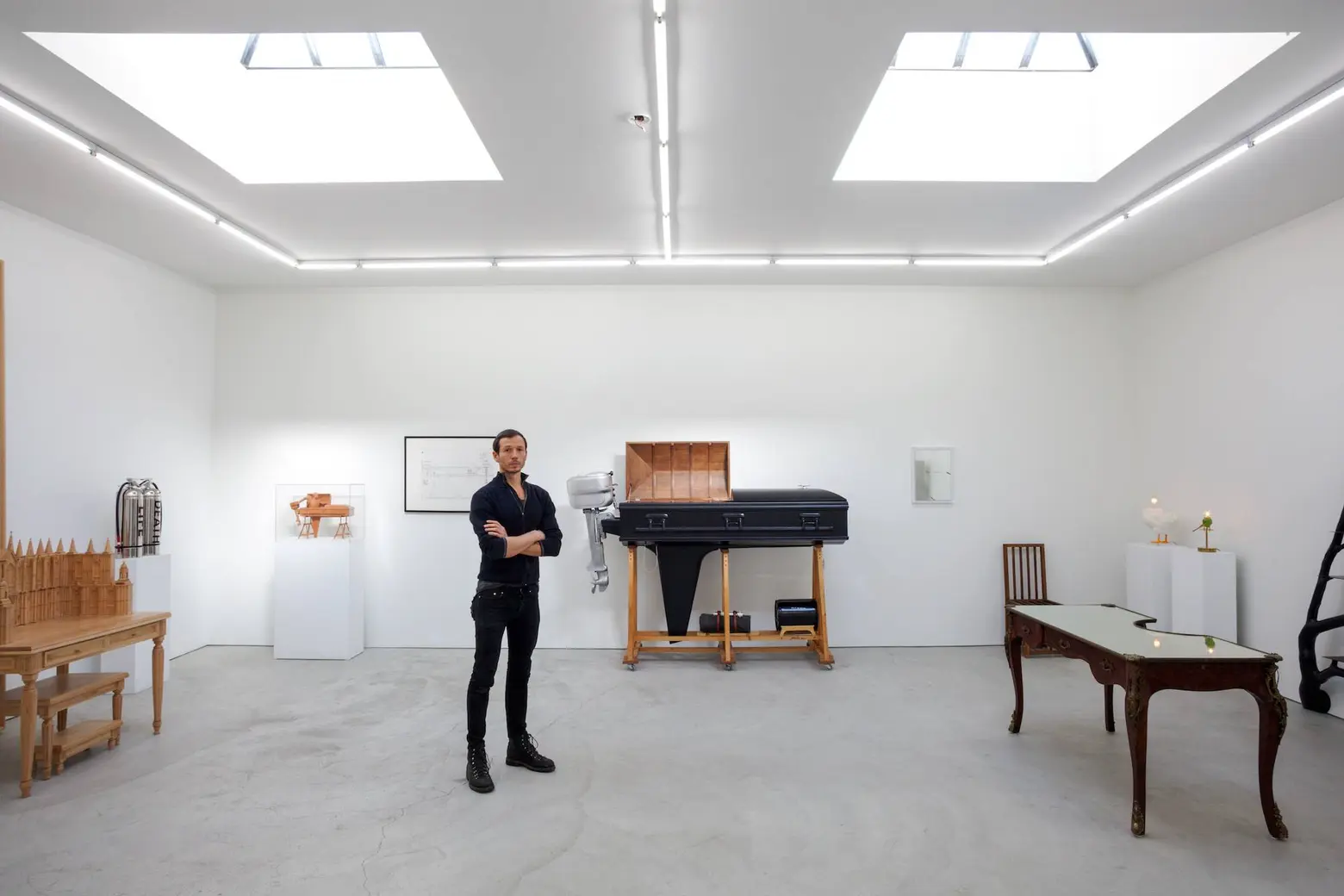
6sqft’s series “Where I Work” takes us into the studios, offices, and off-beat workspaces of New Yorkers across the city. In this installment, we’re touring the South Bronx design studio of Sebastian Errazuriz. Want to see your business featured here? Get in touch!
Sebastian Errazuriz is a Chilean-born artist, designer, and activist but over the years, he’s grown his multidisciplinary studio to incorporate everything from virtual reality to activism. But nothing he does is cookie-cutter. His cabinets undulate and mimic kaleidoscopes; his public art makes social commentary on issues from Wall Street and capitalism to Chile’s politicide; and he’s created sculptures that mix a boat with a coffin and a crystal chandelier with taxidermy birds. Sebastian likens his ability to work in these mediums separately but together to how he can speak both English and Spanish but also Spanglish. “It’s the freedom to incorporate words that do not exist in one particular language but that enrich communication with someone else that I really enjoy within the boundaries of art and design,” he explains.
Now, Sebastian is at the forefront of yet another new frontier. Though he has a 5,000-square-foot space at the uber-hip Industry City, he opened his second location last summer in Mott Haven, one of the city’s newest artist enclaves due to its affordable warehouse spaces and non-residential nature that sets it apart from the more gentrifying parts of the area. 6sqft recently paid Sebastian a visit here to learn how his firm is growing, the process behind his “functional art,” and why he moved to the South Bronx.
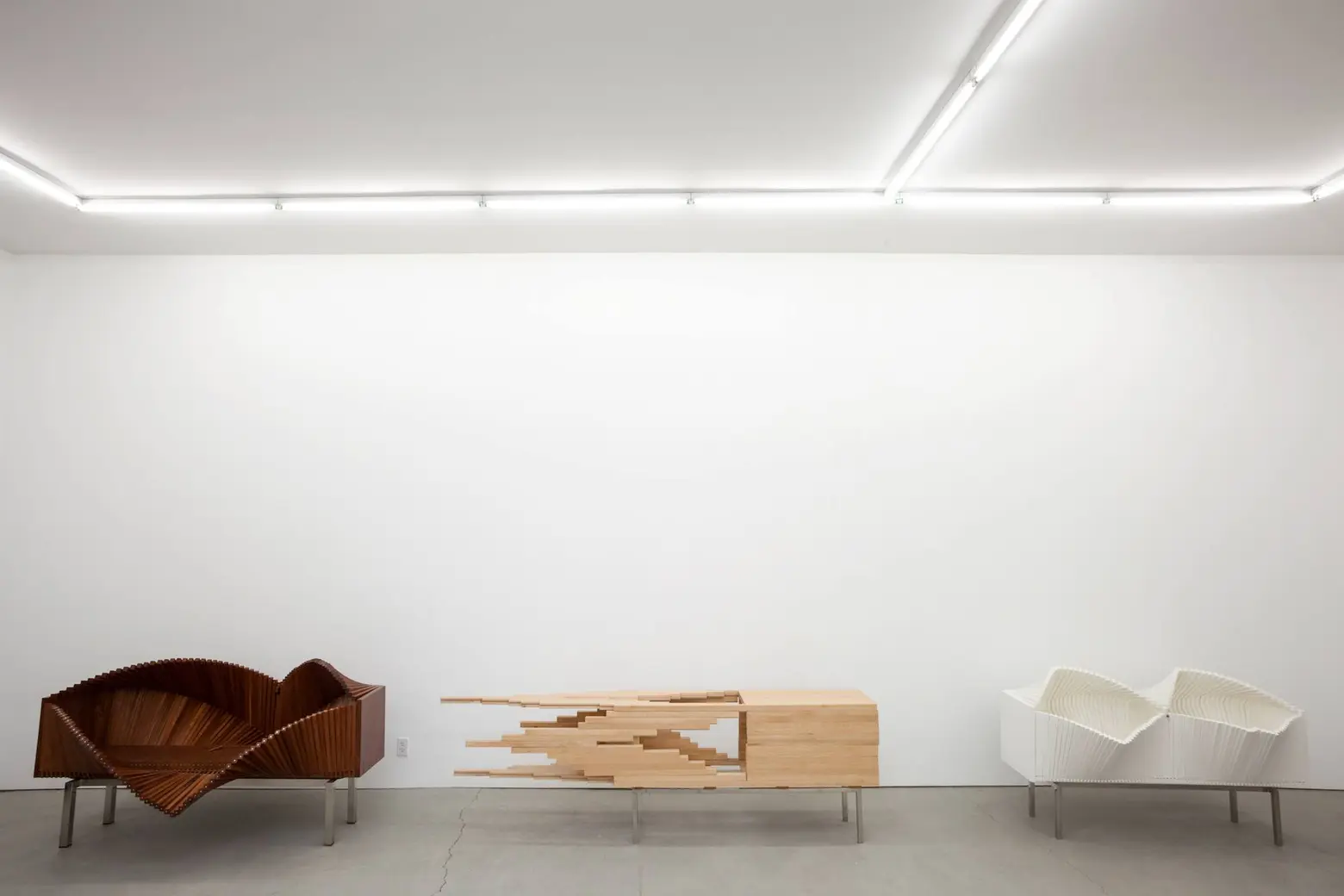
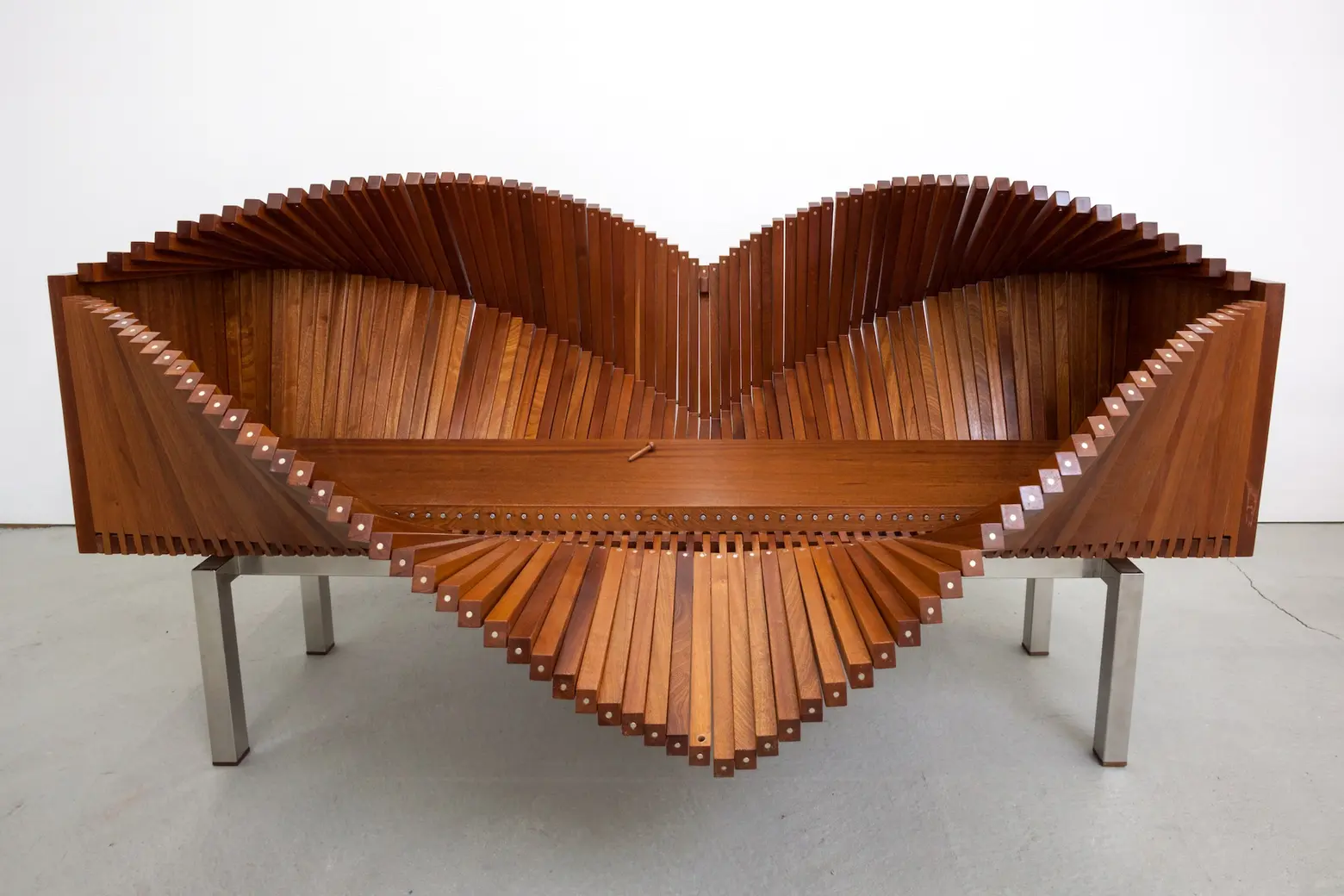
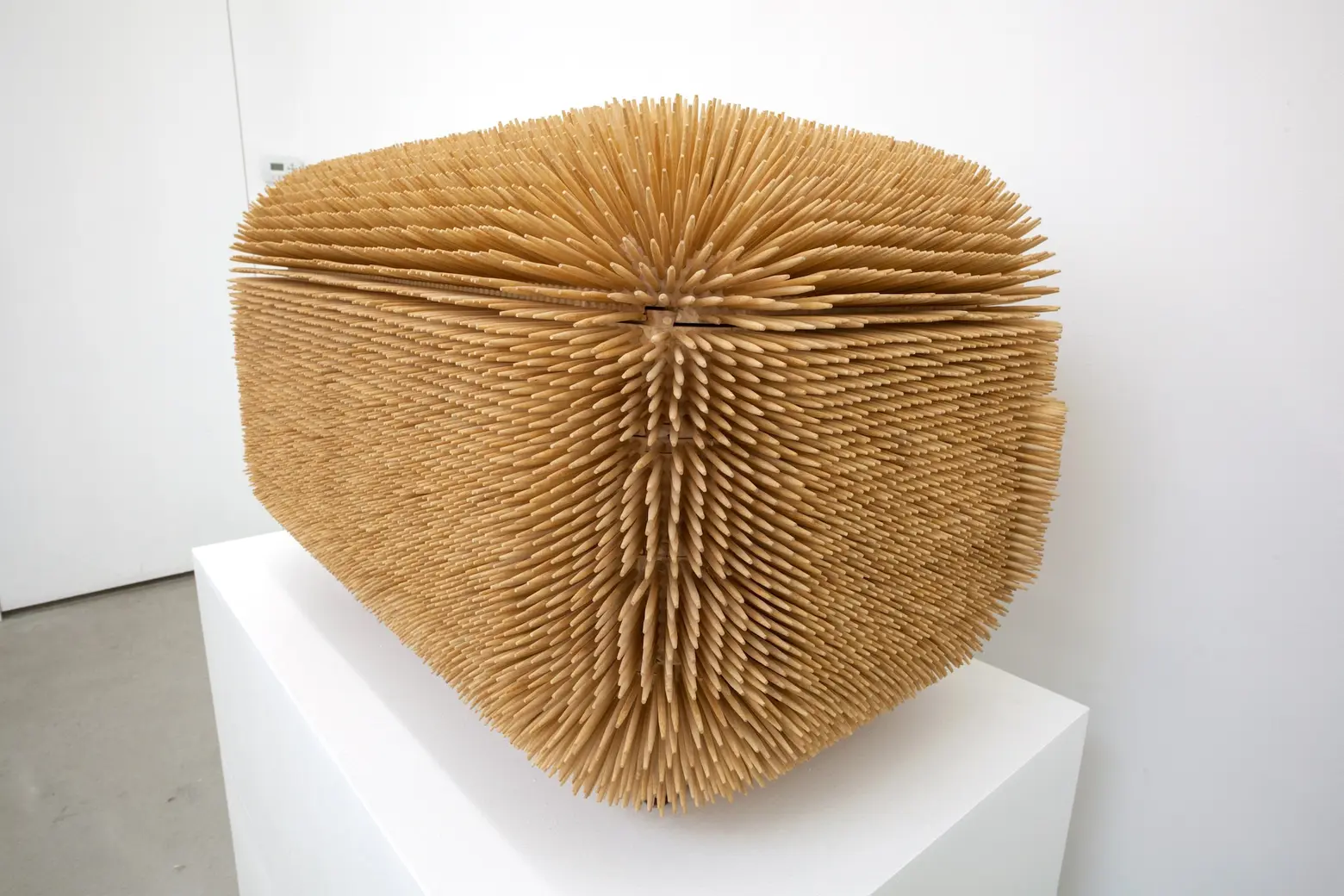 Top: Sebastian’s Wave cabinets flanking his Mahogoni Explosion piece; Middle: A Wave cabinet in motion; Bottom: his Magistral Chest
Top: Sebastian’s Wave cabinets flanking his Mahogoni Explosion piece; Middle: A Wave cabinet in motion; Bottom: his Magistral Chest
You describe your work as “functional art.” Can you tell us about that concept?
I try to design functional objects that incorporate elements of the arts that are a political extension of religious sculpture. But then I also try to get artworks to actually function because they always say that an artwork has no function but itself.
Today everyone is self-expressing. So in a way, the artist is forced to be a little more responsible and have a more civic role within the community in which it’s not just about speaking of what they feel but having an active role communicating ideas through their visual skills.
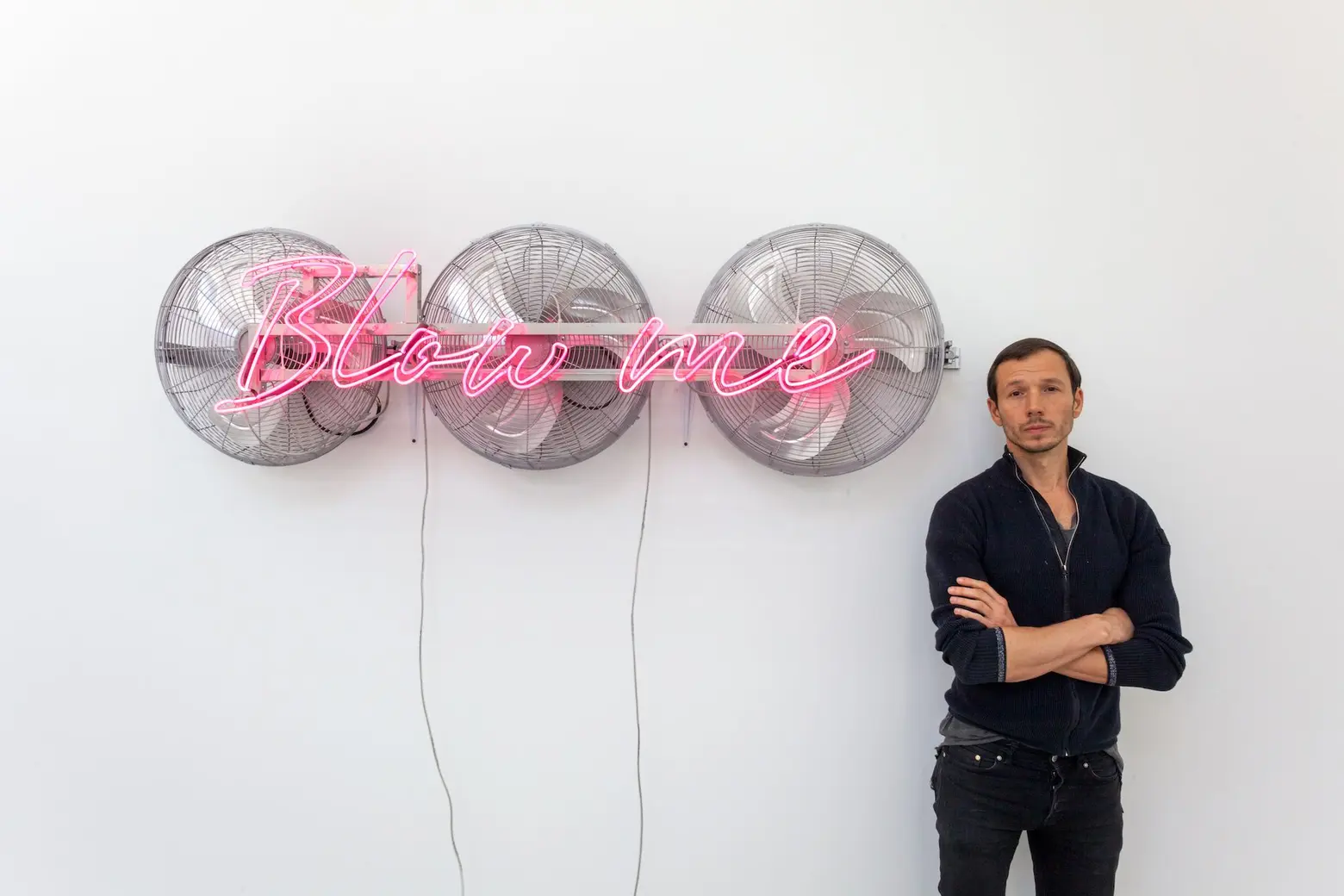
You were born in Chile, raised in London and studied design in Santiago and then came to New York to get a Master’s of art at NYU. How did spending time in these different cities and countries play into your overall aesthetic?
Being Latin has a series of advantages–no matter what social group you’re raised in, you’re still raised within a notion of being part of a group and being responsible for each other. The Latin culture is very into families. It’s not just about you; you have to be responsible for your cousins and your brothers, et cetera. That sense of inclusion is quite interesting in the design and art practice because not only are you trying to do things with a certain level of responsibility but you’re also trying to include as many elements as possible.
The Brits are extremely cold and efficient yet also quite snarky and very witty. Again, you have this general structure of toughness, but the humor allows you to work on projects that are maybe more sensitive. At the same time, it becomes a more democratic component. You can see a piece and think it’s quite simple to get a laugh out of it and then you can continue to see that the rest of the layers are behind the art.
This toughness is required if you’re in the arts in New York City. In New York, our time is super valuable. We get annoyed that people stand outside the subway stop or get in our way. I think this sense of speed and urgency is very vital, too.
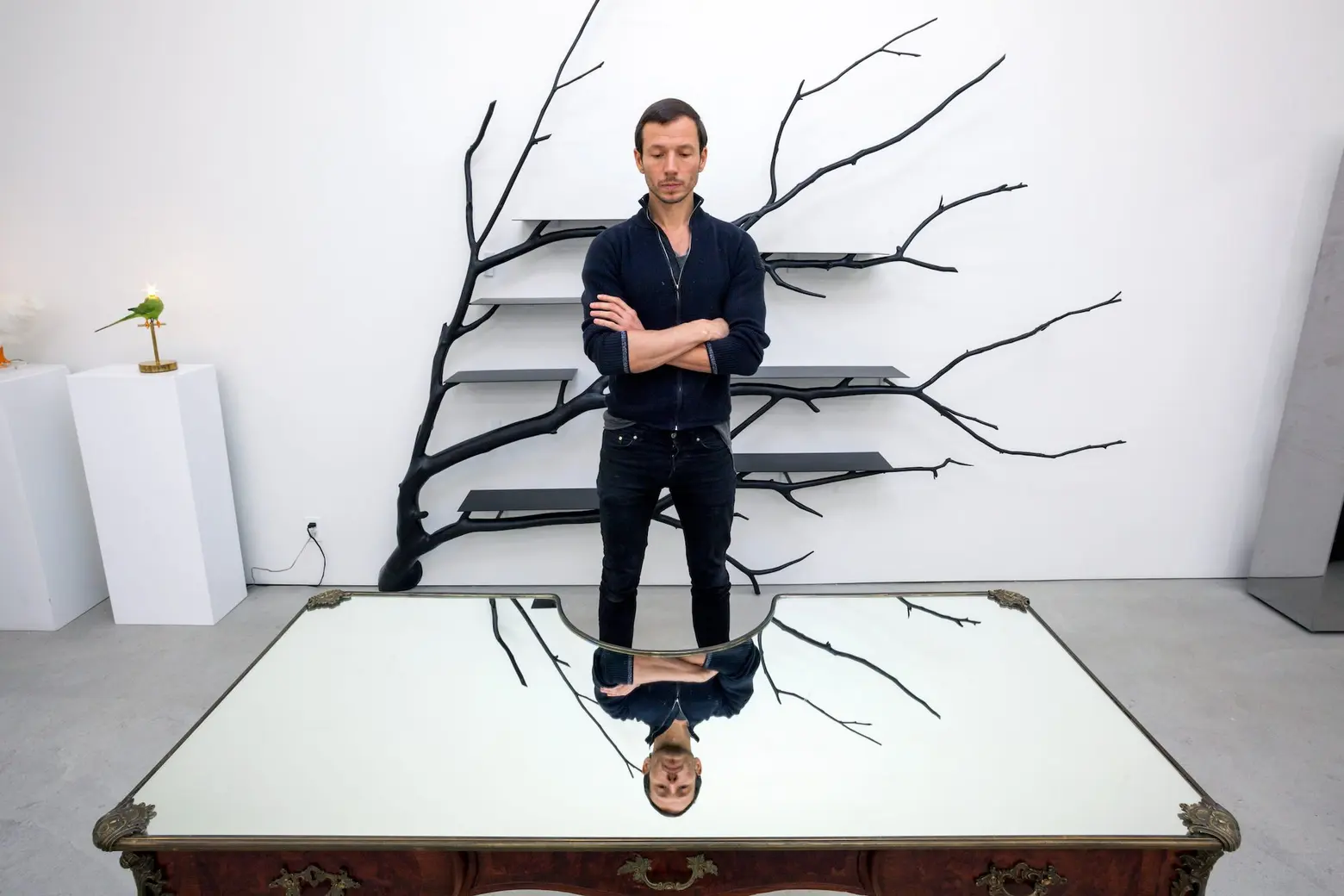
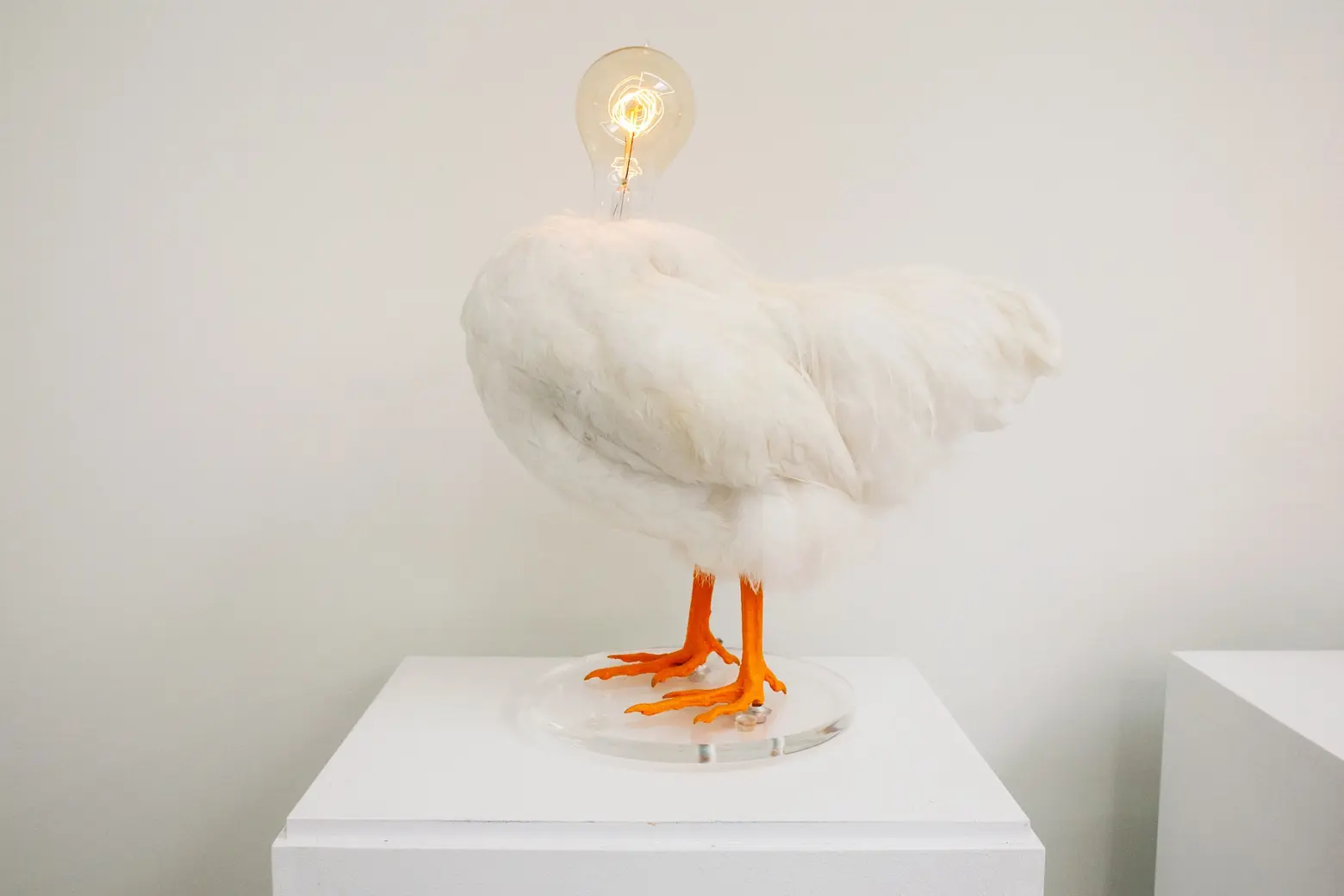 Top: Sebastian looks at his reflection in the Narcissus Desk, which he created based on the idea that “someone could see their reflection and yet not be aware they were looking at themselves.” Behind him is the Bilbao/tree shelf. Bottom: Chicken Lamp.
Top: Sebastian looks at his reflection in the Narcissus Desk, which he created based on the idea that “someone could see their reflection and yet not be aware they were looking at themselves.” Behind him is the Bilbao/tree shelf. Bottom: Chicken Lamp.
Do you feel as though your work has evolved being in New York?
New York is the cultural capital of the world so [seeing] the latest projects and what the competition is doing is a constant reminder of the pulse and speed and the level at which you are required to perform. And then we add that it is one of the richest cities in the world and therefore the vast majority of the collectors are people who have access to the most exquisite things; they are trained in a level of sophistication that forces you to be up to par. It’s almost like imagining a tech accelerator for a start-up; New York is an accelerator for the level of artists and designers.
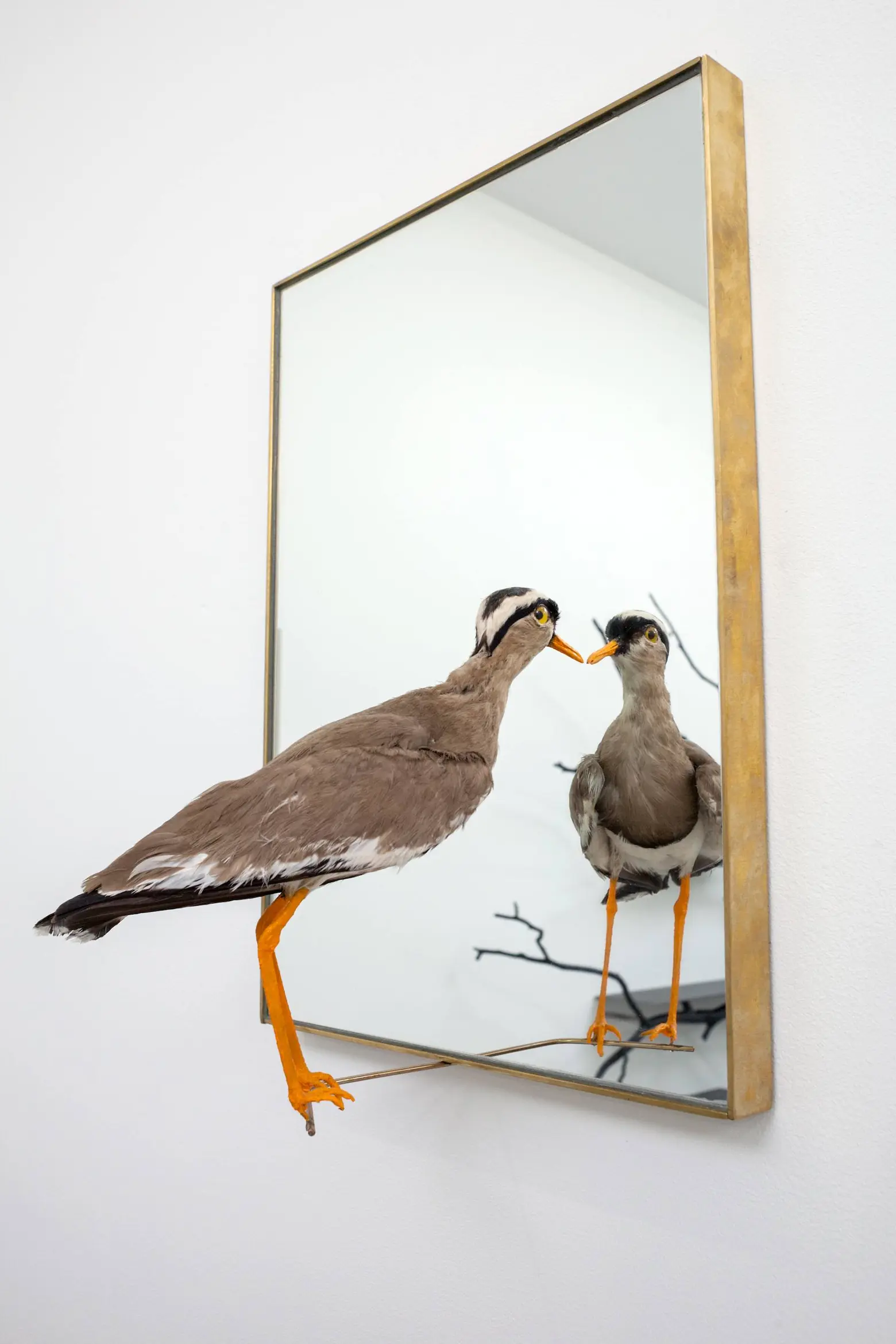 On the Edge Starting at Eternal Infinity. Sebastian says of this piece, “I wanted to create a small piece that could try to talk about death and narcissism in this crazy era of Art Fair selfies.”
On the Edge Starting at Eternal Infinity. Sebastian says of this piece, “I wanted to create a small piece that could try to talk about death and narcissism in this crazy era of Art Fair selfies.”
Why is creating public art important to you?
A lot of stand-alone pieces end up in homes of collectors or are showcased in galleries that are relatively exclusive. As much as it’s a privilege to be able to have these pieces sold at a good price and exhibited in nice places, you also want to create work that can reach as many people as possible. If there’s a percentage of people who don’t have the time to go to museums or the cultural interest, what if we could take our works out to them and rock their routines?
Their mind frame isn’t in the place that they’re going to go see artwork, so you create this comparison to their normal routine and interrupt life, and I think there’s something very beautiful there.
Do you think this taps into the South American traits you were discussing?
Yes; if you were privileged enough to have a really good education you have a responsibility to give back and create projects that the community can enjoy, too. And if the government isn’t going to sponsor it, you’ve got to figure out a way to sponsor it.
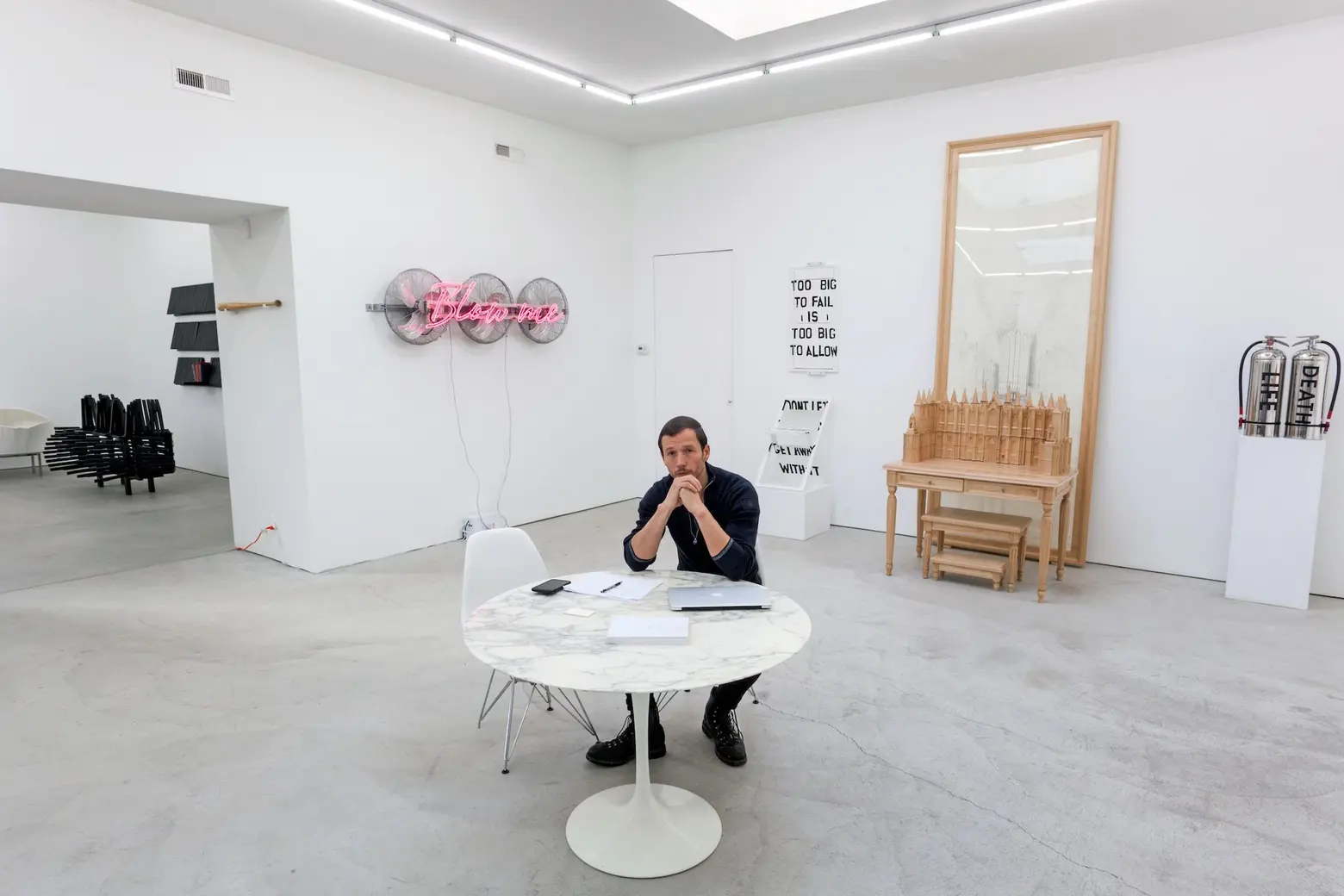
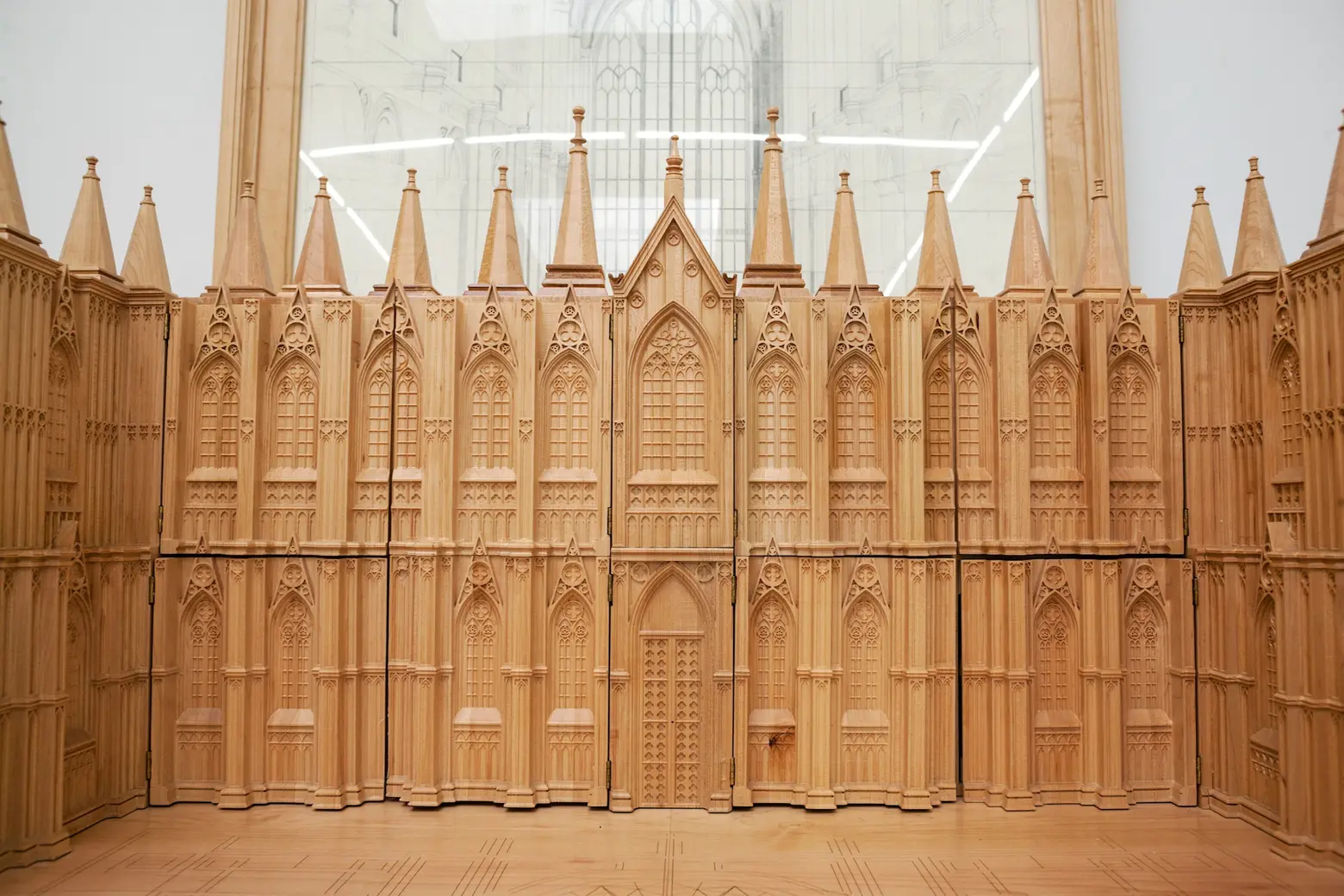
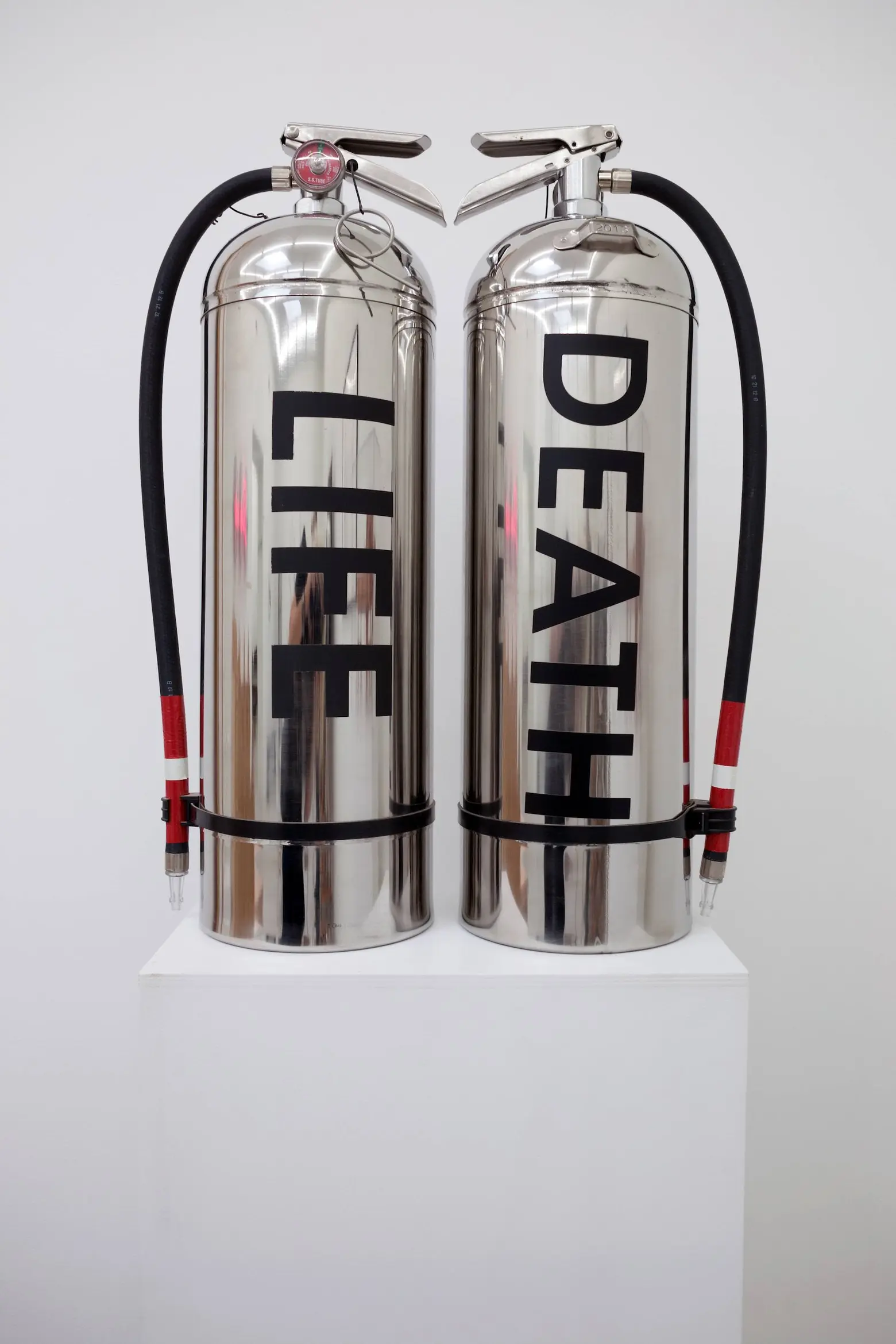 Middle: The Sanctuary desk; Bottom: “Art Is a Matter of Life and Death“
Middle: The Sanctuary desk; Bottom: “Art Is a Matter of Life and Death“
To that point, in 2006, you did a piece in Chile’s National Stadium titled “The Tree Memorial of a Concentration Camp,” where you placed a large magnolia tree on the site where dictator Augusto Pinochet had imprisoned, tortured, and killed thousands of political prisoners in 1973. What was this experience like?
After that period, people continued to use the stadium without any kind of cleaning of any kind. After two years of work, I managed to raise money to rent the stadium for a whole week for myself. We brought in machinery, dug a hole in the middle of the soccer field where you start a match and planted the 40-foot tree. Then we covered the grass around it so it looked as if the tree had always been there. It’s as if the space was really a park and not a football field.
Then we opened up the gates so suddenly everyone could walk in, and this stadium that was so charged suddenly was this very tranquil park. And because the walls were so high, it was very silent even though it’s in downtown Santiago.
That project in and of itself, I think, did more to get the people of Santiago to deal with part of their history. We even had a soccer match where Chile’s national soccer team played [with the tree in the center], and we had 40,000 people go see this surreal match.
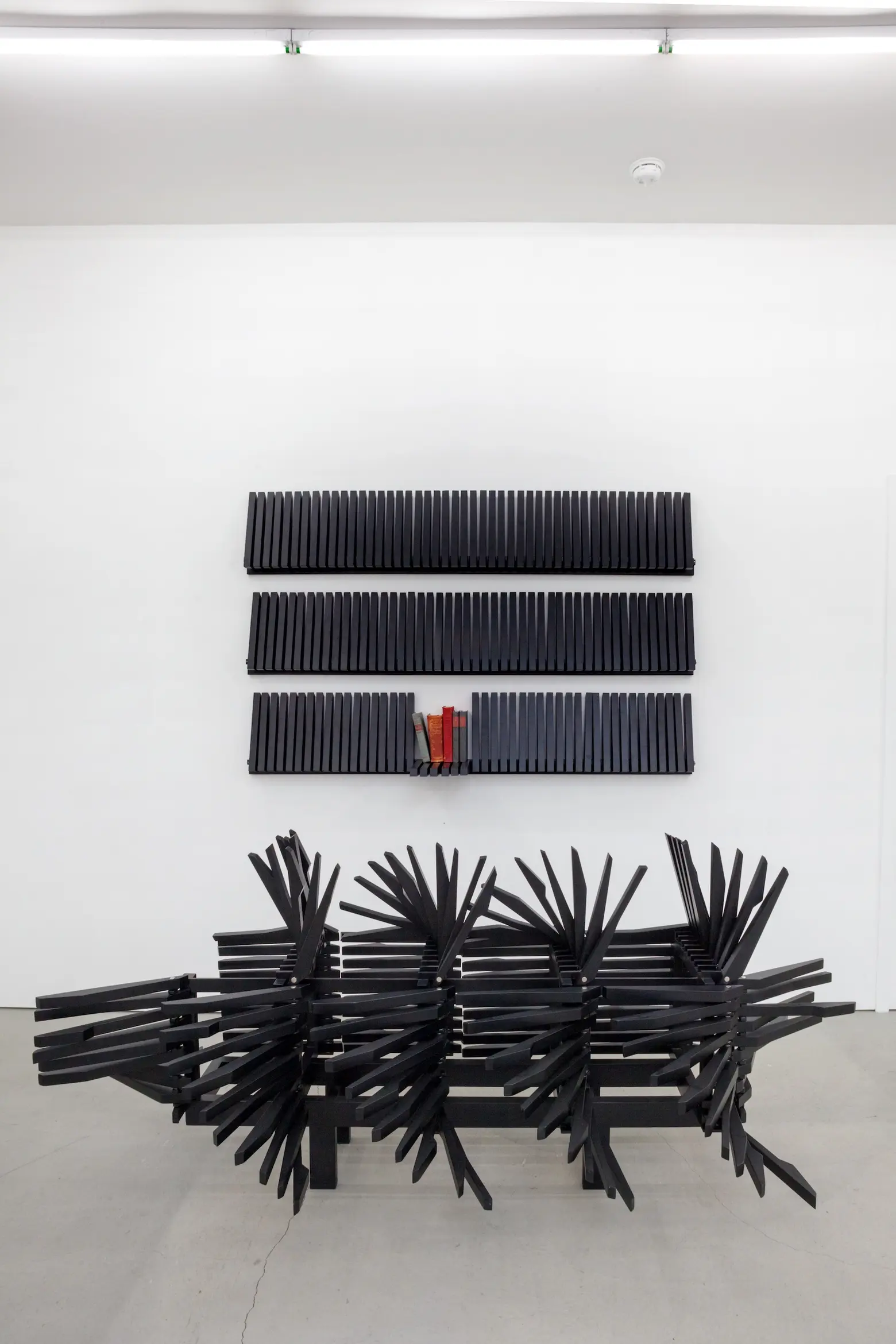
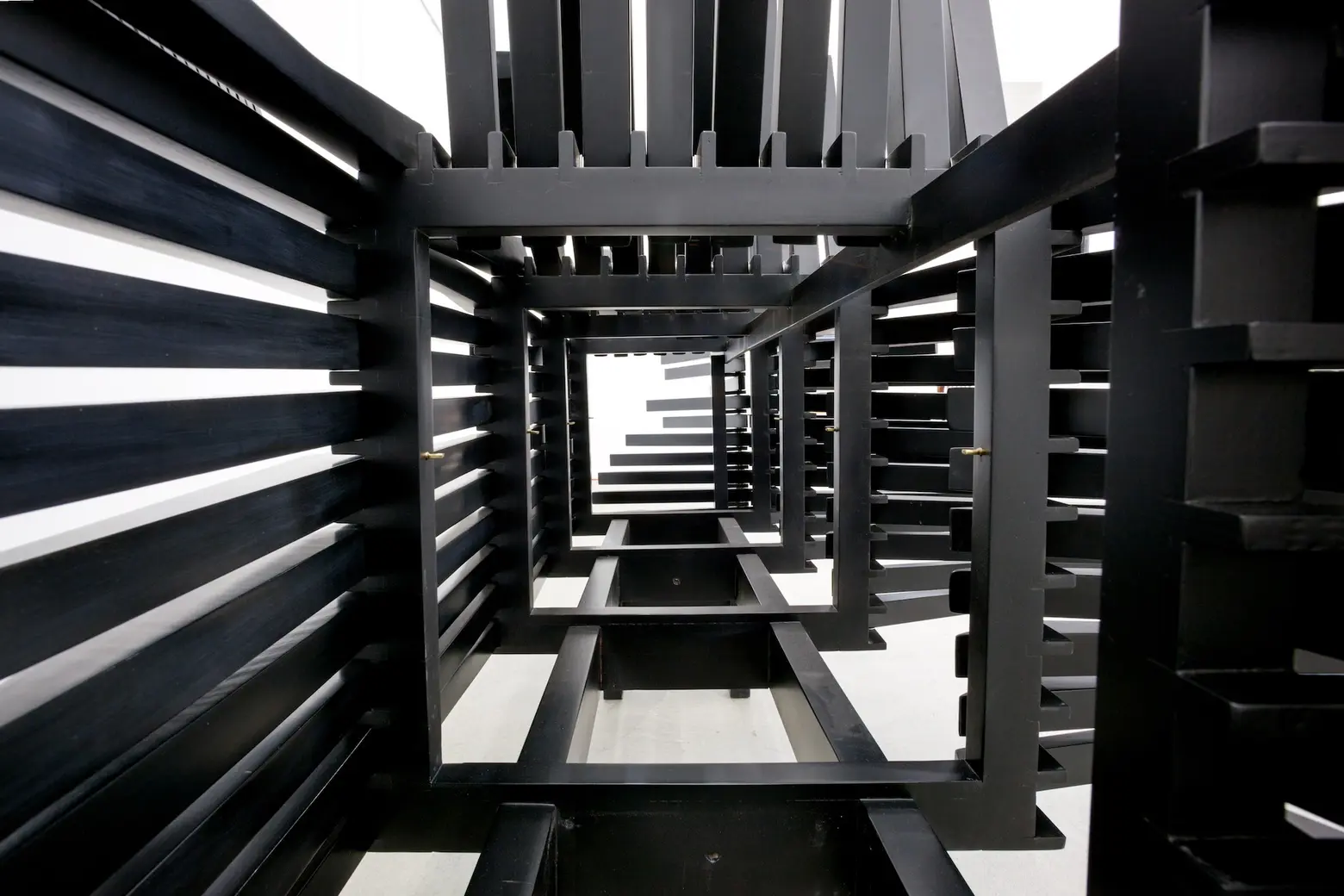 The Piano Shelf sits above the Porcupine Cabinet, which “questions the cost-efficient paradigm that cabinets must consist of a box with two front doors.”
The Piano Shelf sits above the Porcupine Cabinet, which “questions the cost-efficient paradigm that cabinets must consist of a box with two front doors.”
If you could have your pick of any space in New York to occupy with your work what would it be?
I would take the 9/11 memorial. I think the architects did an amazing job. It was an incredibly difficult challenge and what they’ve done is intellectually brilliant but it’s lifeless. It’s extremely cold and doesn’t have any personal touch. It doesn’t contain you. It doesn’t welcome you. It doesn’t hold you. And it also doesn’t point us in the direction of those people who are from other cultures and often are considered our enemy. It doesn’t help tear down the cultural [boundaries], and I think that should be a responsibility. There needs to be some sort of a bridge that’s going in one direction, asking for the other side to build their bridge better.
There’s artwork there but it’s commissioned by the architects for the areas where the architects decided that the art should go. So it’s all part of a master plan that is at an urban scale and not at a people scale, not at a heart scale, and not at an emotional scale.
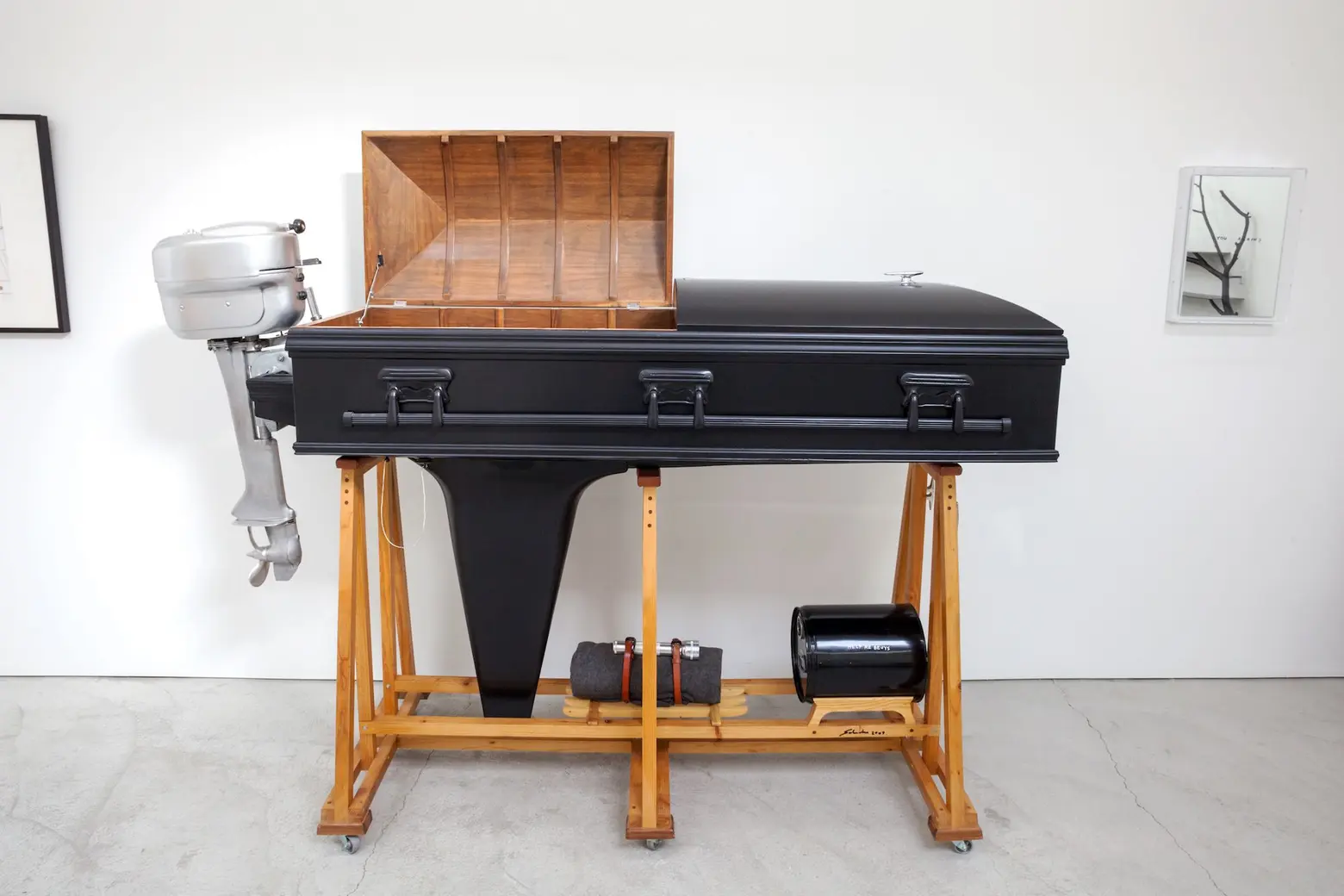 Boat Coffin is one of Sebastian’s favorite pieces. It “allows the ‘sailor; to say goodbye to his people on shore, and then go off on his own into deep seas and open skies…” He says, “Life is short, and if I know I’m about to die, I’d rather take my own life and go down in style, shouting to the heavens to go fuck themselves.”
Boat Coffin is one of Sebastian’s favorite pieces. It “allows the ‘sailor; to say goodbye to his people on shore, and then go off on his own into deep seas and open skies…” He says, “Life is short, and if I know I’m about to die, I’d rather take my own life and go down in style, shouting to the heavens to go fuck themselves.”
On a bit of a lighter note, you created a public art piece here in Times Square in 2015, where 50 digital billboards played a close-up, black-and-white video of you yawning. What was the inspiration behind this?
As I said, one of the main characteristics here is time and speed. As much as it’s important as a professional to be able to reach those levels, at the same time, it’s important to create a moment of pause and offer the city that never sleeps a moment to be tranquil. And it occurred to me that yawns are contagious. We’re not really sure why. It’s supposed to be related to empathy, a characteristic that we don’t have too much in New York. So I figured what if I could get as many screens as possible in Time Square and project New York and somehow get people in Time Square to stop and start yawning. It took me quite a while to get all of the cards in place, but we eventually got 50 giant screens for three minutes every night for a full month. The most visually populated spot on the planet suddenly started slowing down a bit.
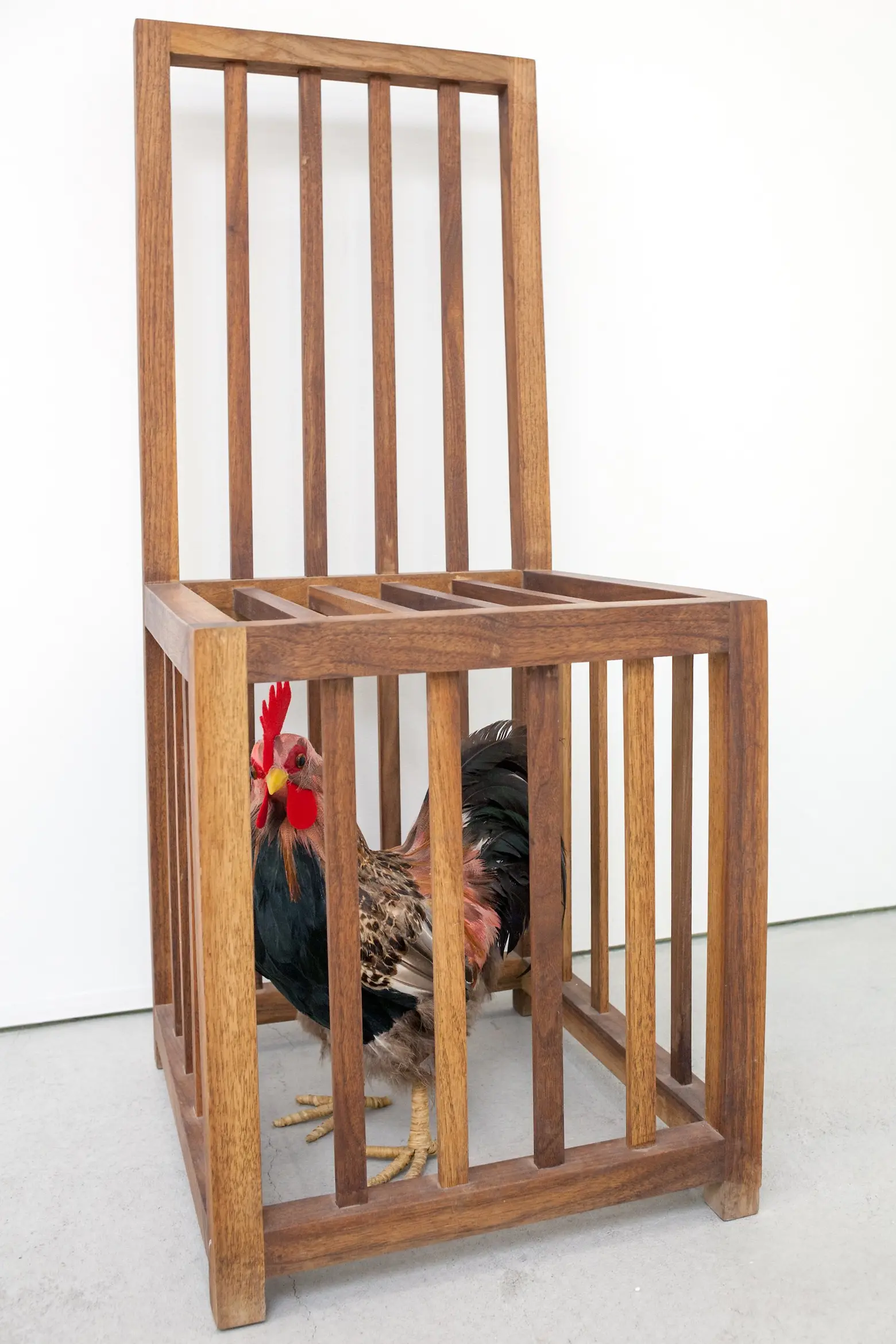 Chicken Chair was an attempt to make people more aware of the choices they make each day. “I would like for people to see one live chicken once more in their life, to find it both uncomfortable and beautiful at the same time,” explains Sebastian.
Chicken Chair was an attempt to make people more aware of the choices they make each day. “I would like for people to see one live chicken once more in their life, to find it both uncomfortable and beautiful at the same time,” explains Sebastian.
Obviously, the entire political culture is a huge topic today, but are there any more specific social and political issues that are really affecting your current work?
There are many, especially in terms of general awareness. For example, we’ve been working on an app platform to help find missing kids. I was going from my home to the studio and saw those photocopied posters. I became sensitive to that and started trying to figure out how to make a contribution from a technological standpoint that could get to most people. And then I had to understand the social logic, the politics of what’s going on with the police, and how to create alliances with companies to all come together to make a contribution.
I think every artist and every person has a responsibility today. It’s not just the current political scene that is much more intense and scary than it was a decade ago but also the fact that global warming continues to move exponentially with repercussions that we’re not really aware of. There are a lot of experts saying we’re about to go into a couple decades of mass unemployment, huge migration, mass social inequality, and corporations having more and more power than ever. So I think the idea of the artist who is only self-reflective and hopes people will be fascinated by his personal aesthetic is a thing of the past.
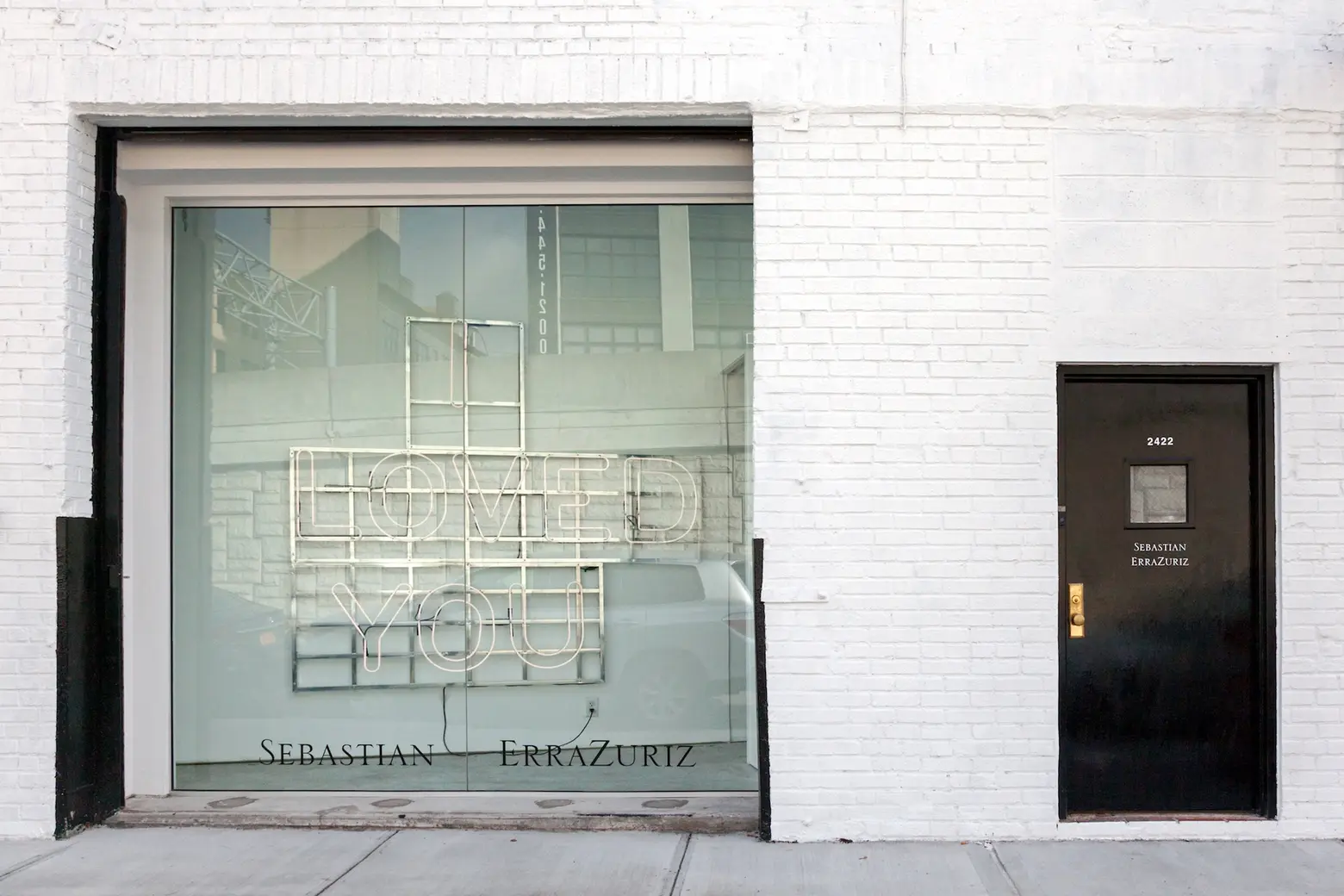
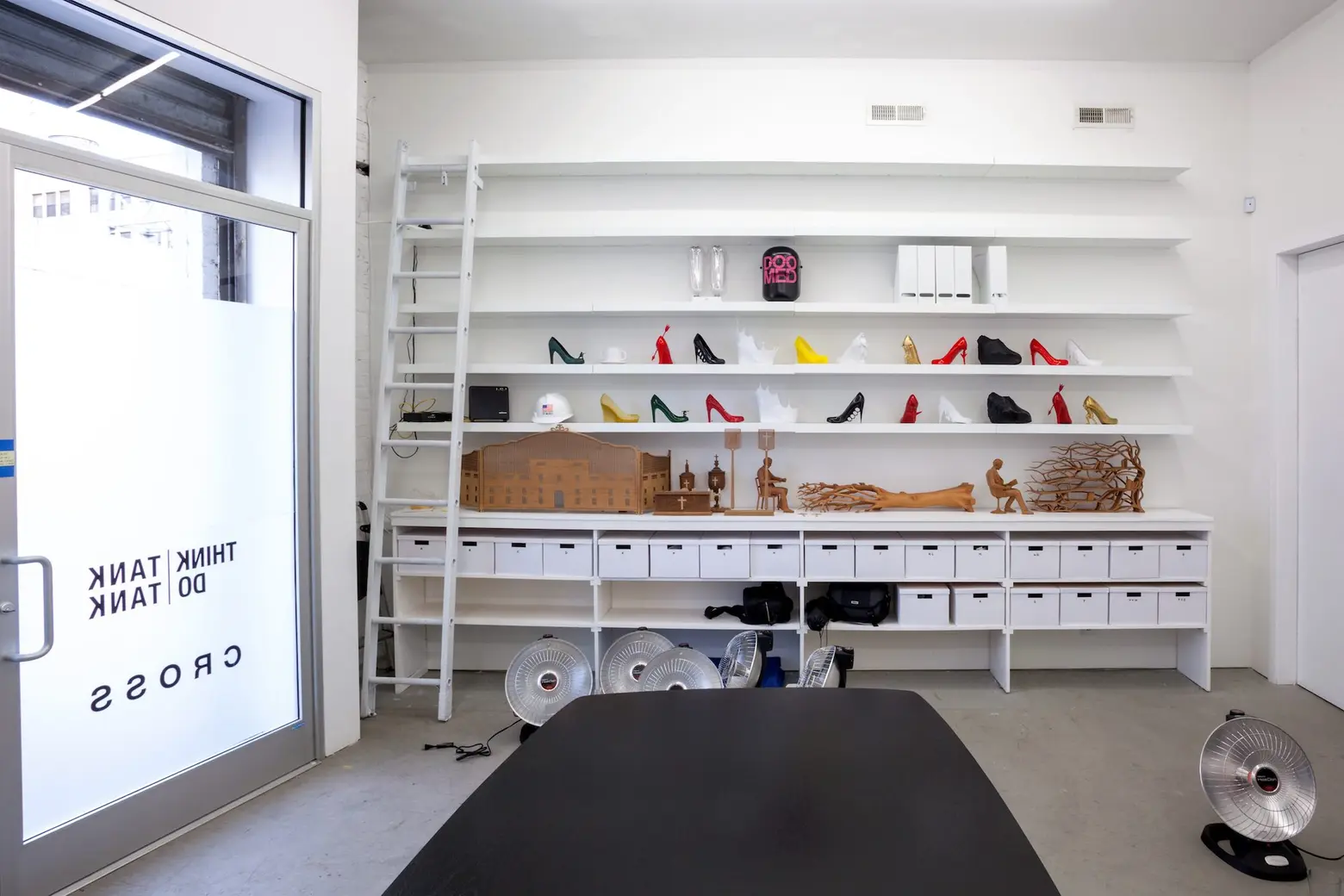
Why did you choose Industry City for your first studio?
For me, it was simply the possibility of having a large space at a reliable price where you didn’t have to worry too much about your neighbors. And it being a quick trip from the city allowed us to fabricate all the different pieces that we needed to.
And why the Bronx for your second location?
It seemed like a good idea to separate spaces because of all of the different disciplines we do and to be able to separate functions physically and not confuse people as much when they go to one place or another. This is more where we’re working on tech, and we’re using it as a show space. We can exhibit things in a very clean environment.
Have you seen more artists and creative companies coming into this neighborhood?
Definitely. In just three months at the coffee shop next door, you’d see the number of bagels and muffins going down. Right at the beginning, it seemed like these guys were having to take all of this food back every day, but a little while later you’re like wow, people are buying and the bagels are gone.
+++
RELATED:
- Where I Work: Inside Made in Americana’s Bed-Stuy workshop and collaborative
- Where I Work: Artistic duo Strosberg Mandel show off their Soho studio and glam portraits
- Where I Work: Inside the plaster and mural studios at Evergreene Architectural Arts
All photos taken by James and Karla Murray exclusively for 6sqft. Photos are not to be reproduced without written permission from 6sqft.
Explore NYC Virtually
Leave a reply
Your email address will not be published.
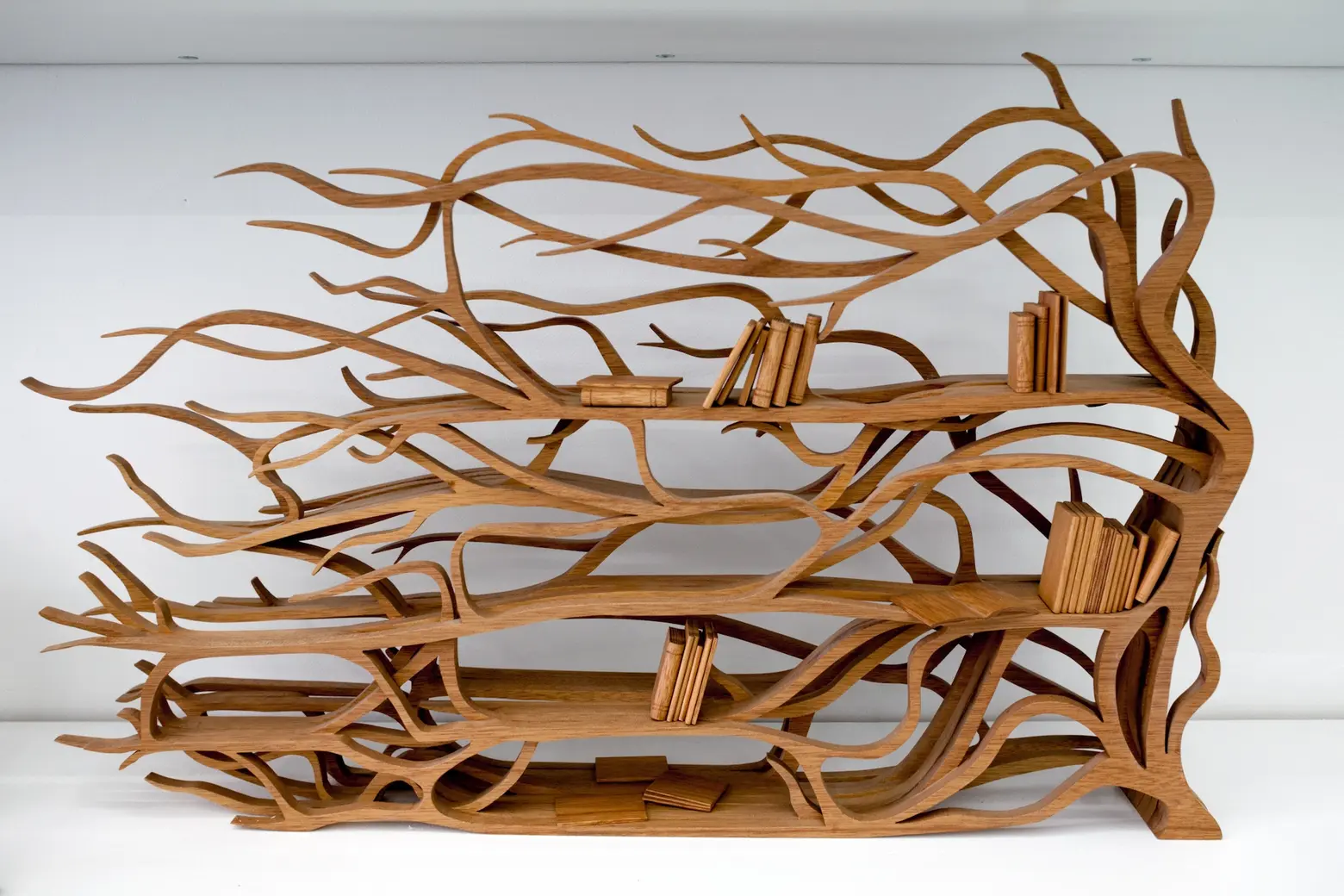 The
The 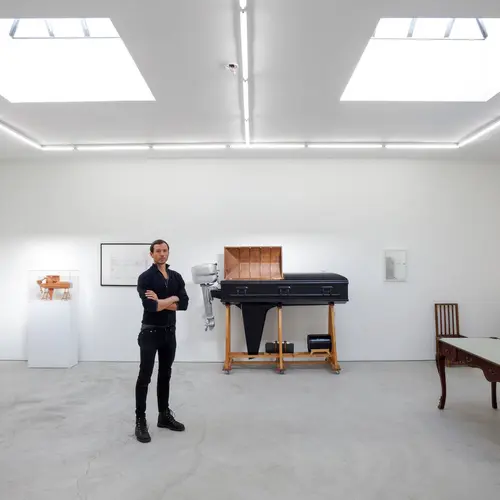
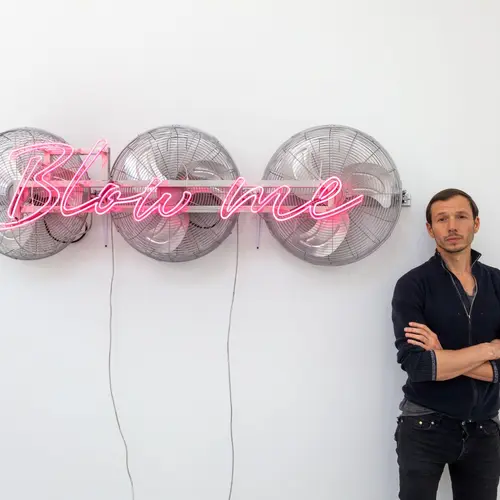
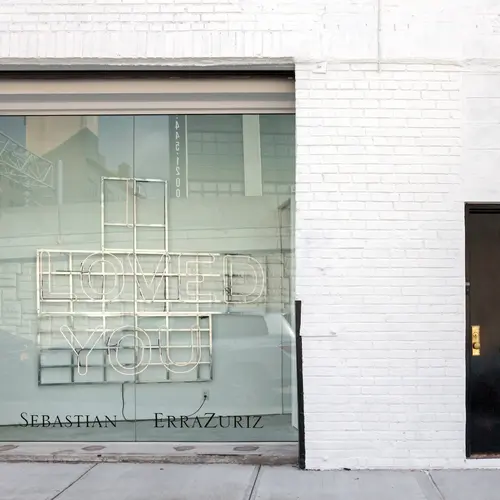
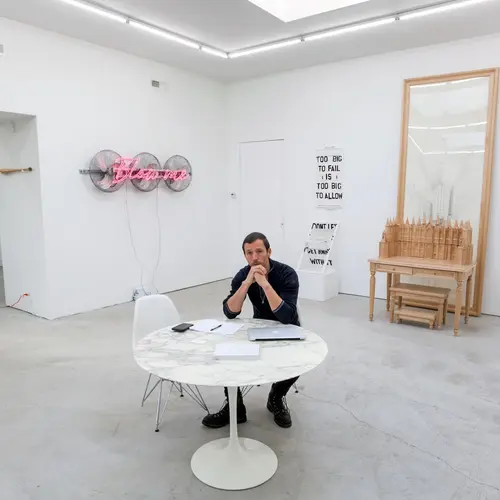
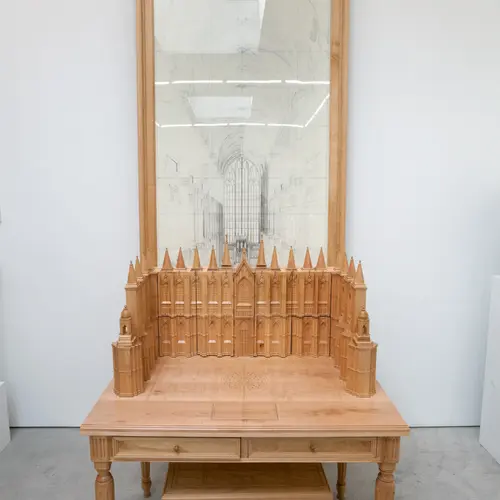
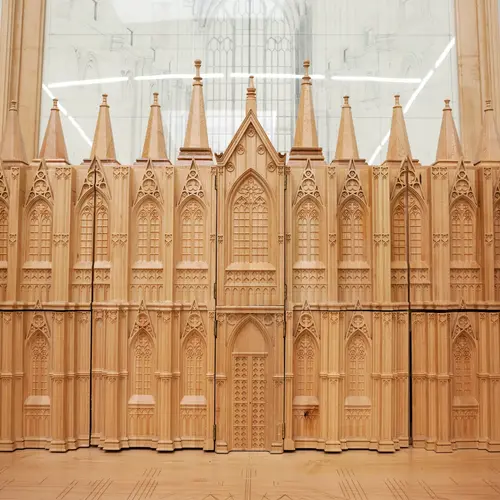
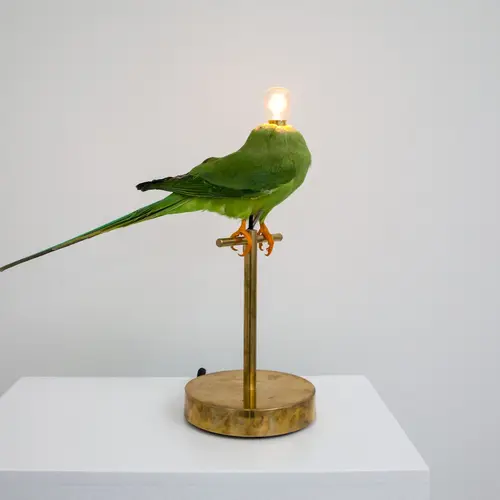
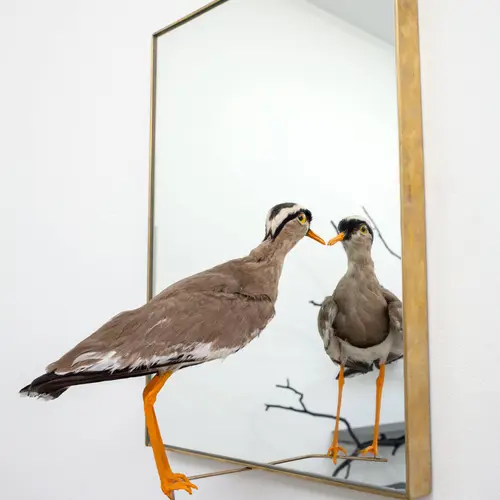
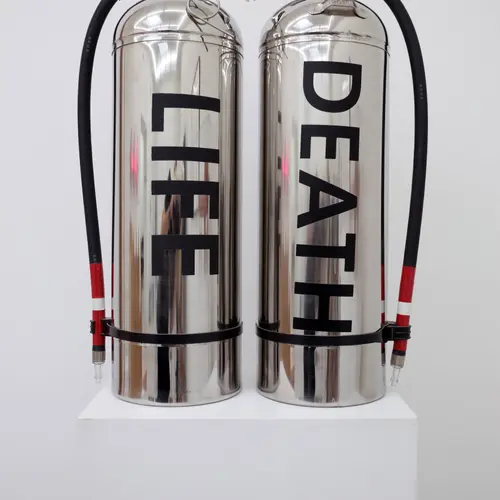
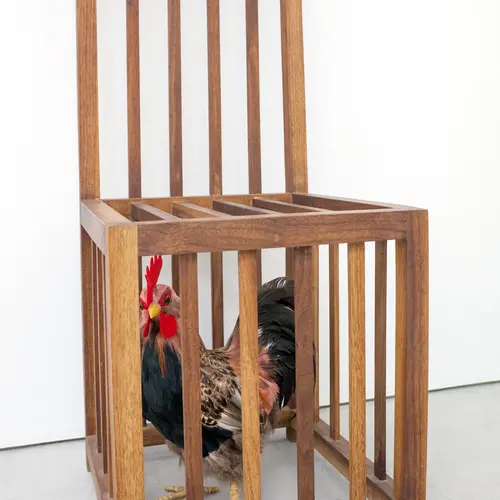
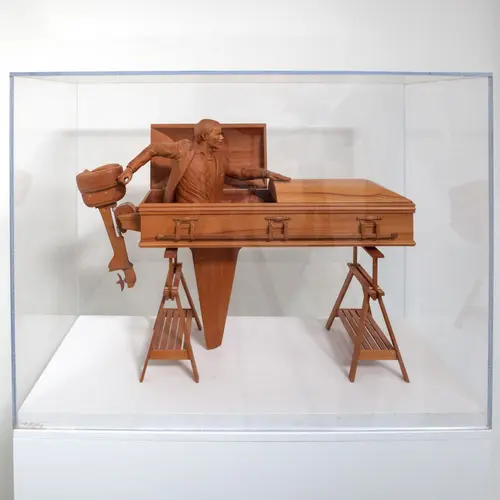
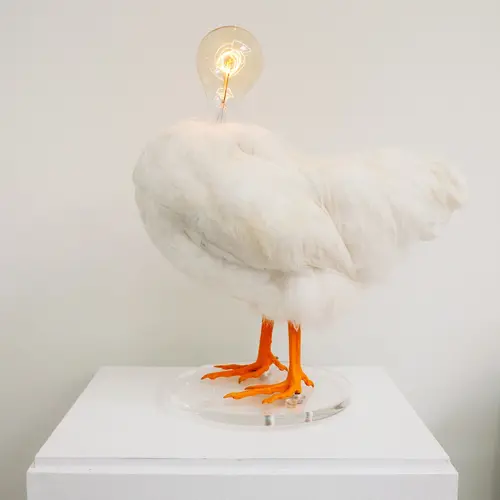
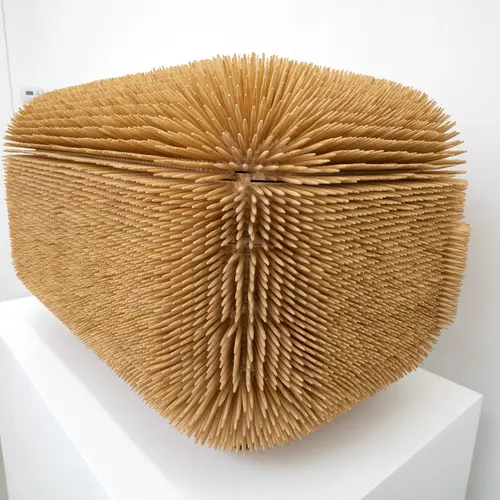
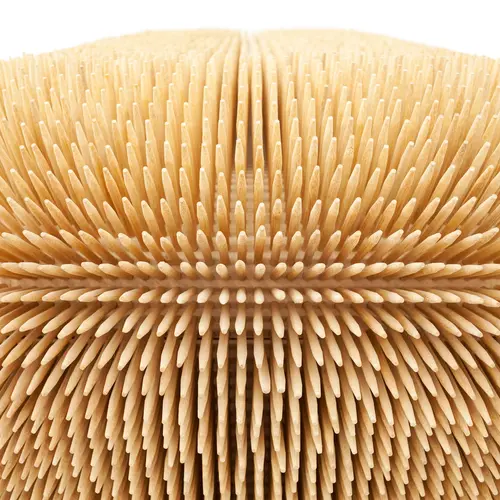
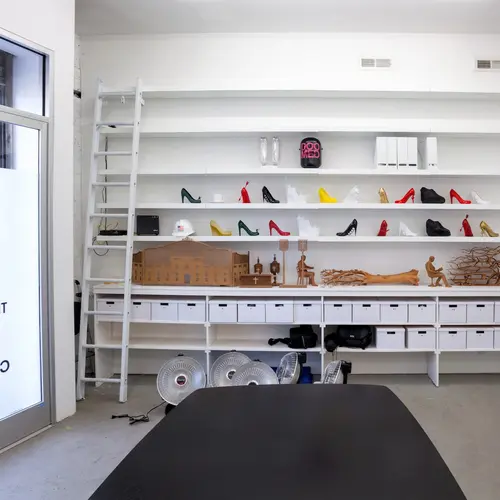
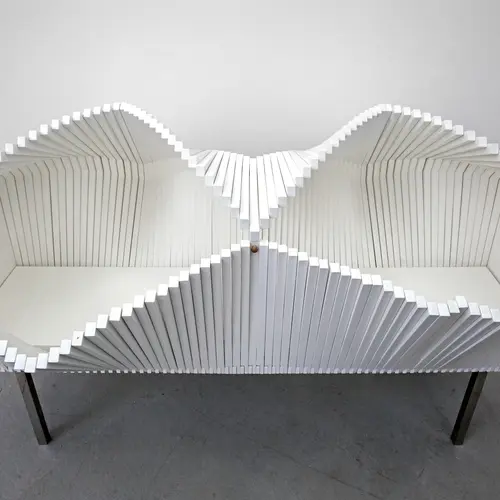
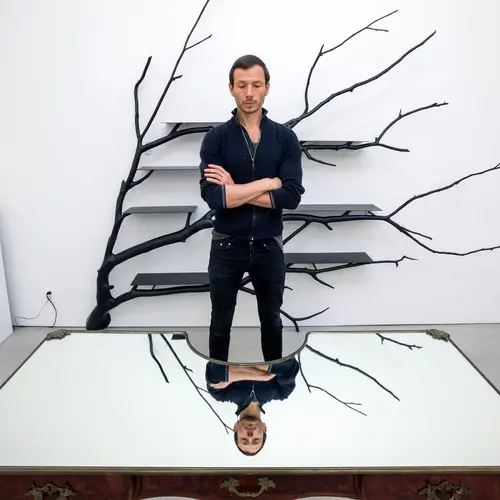
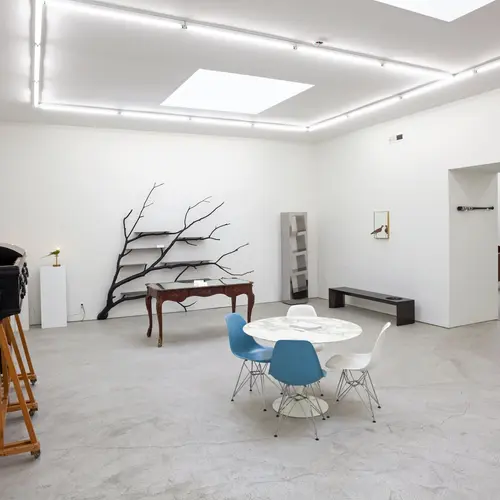
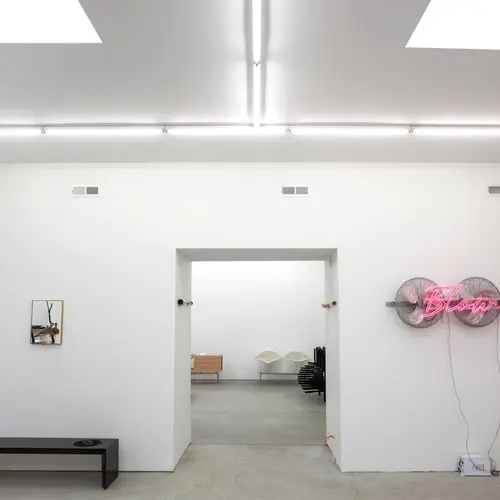
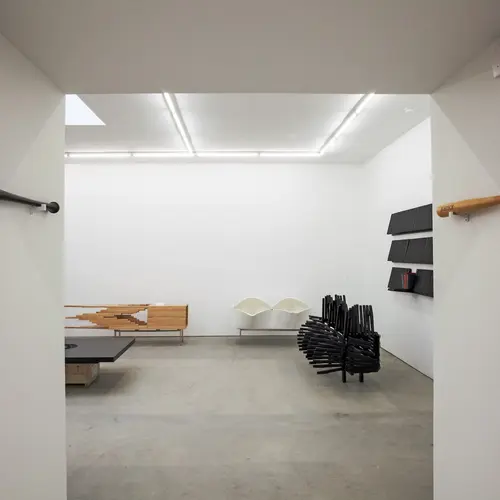
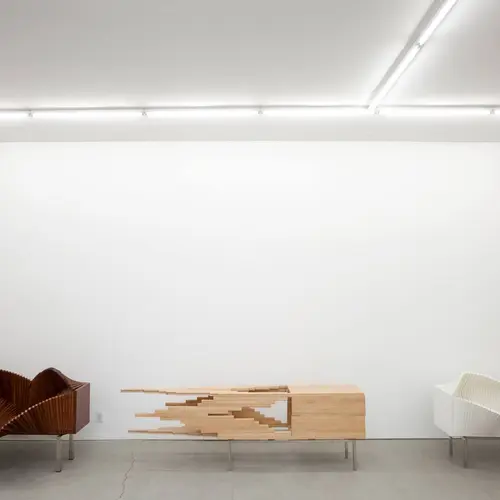
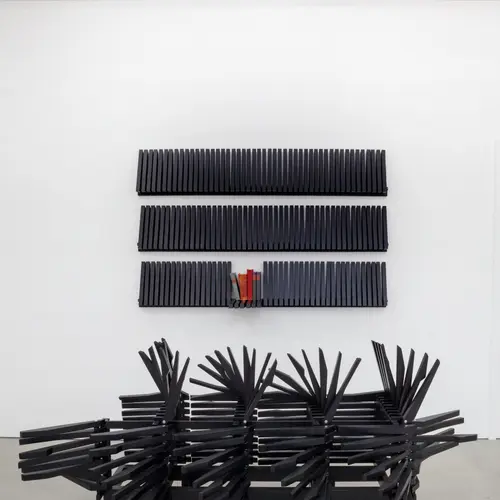
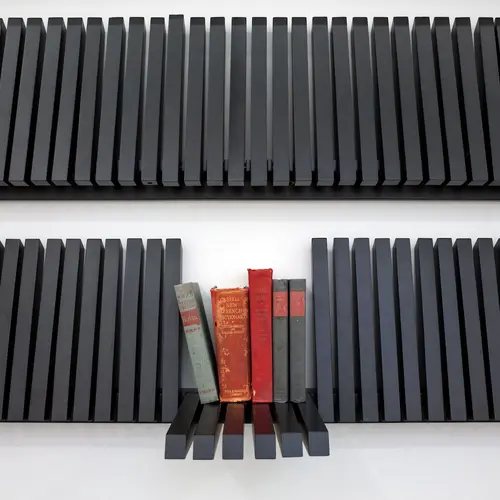
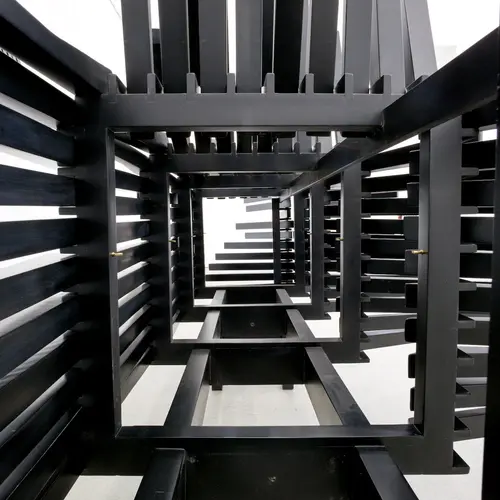
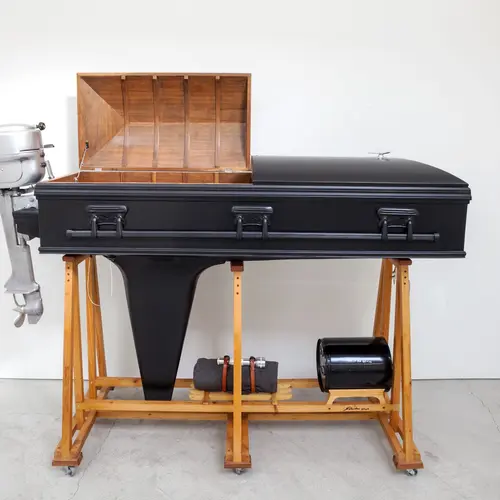
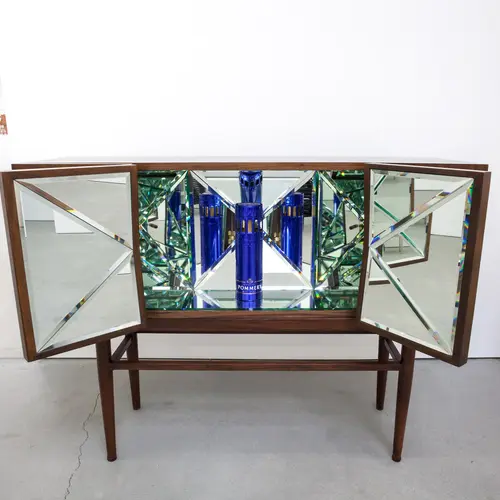
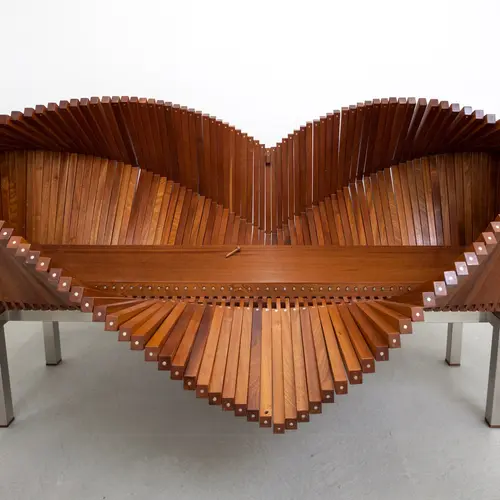
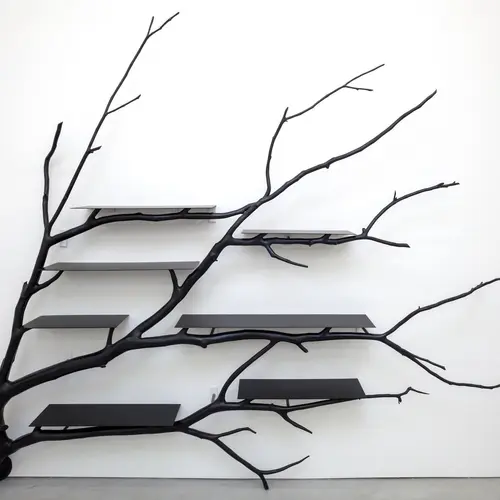
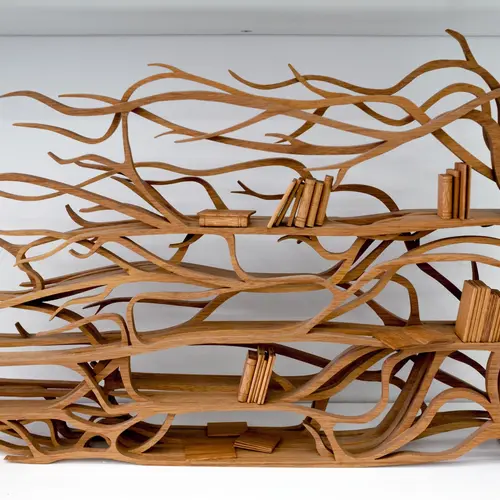
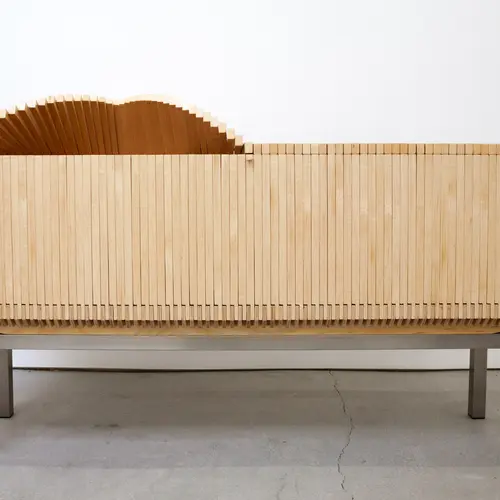











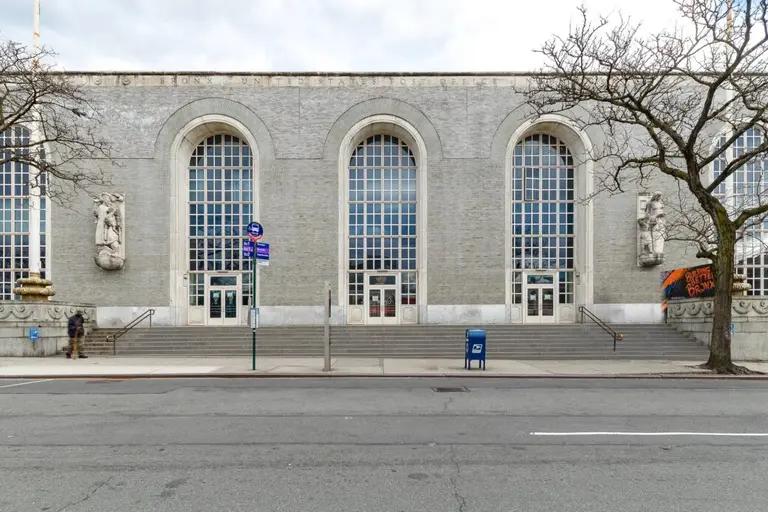
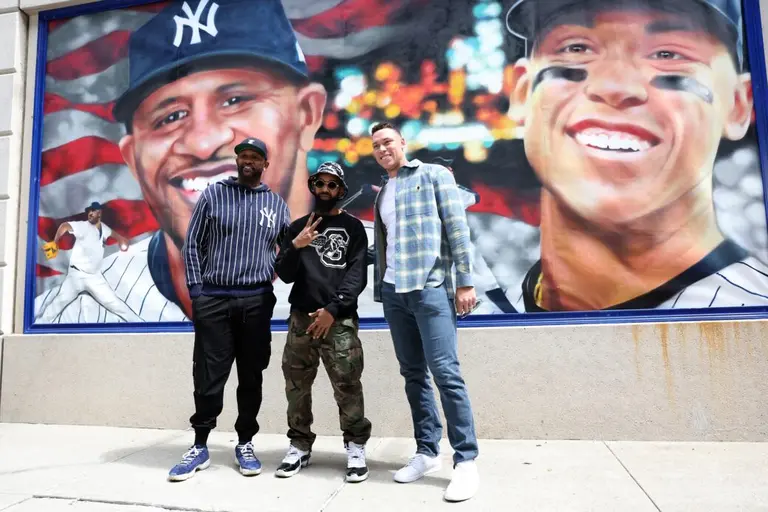
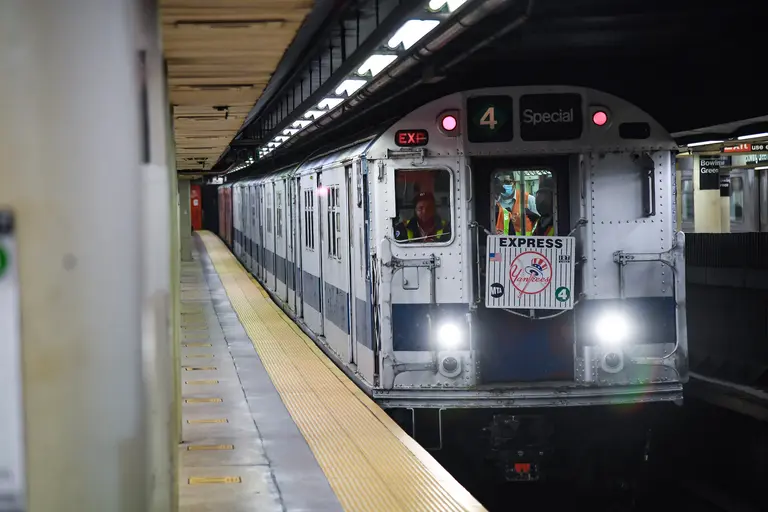
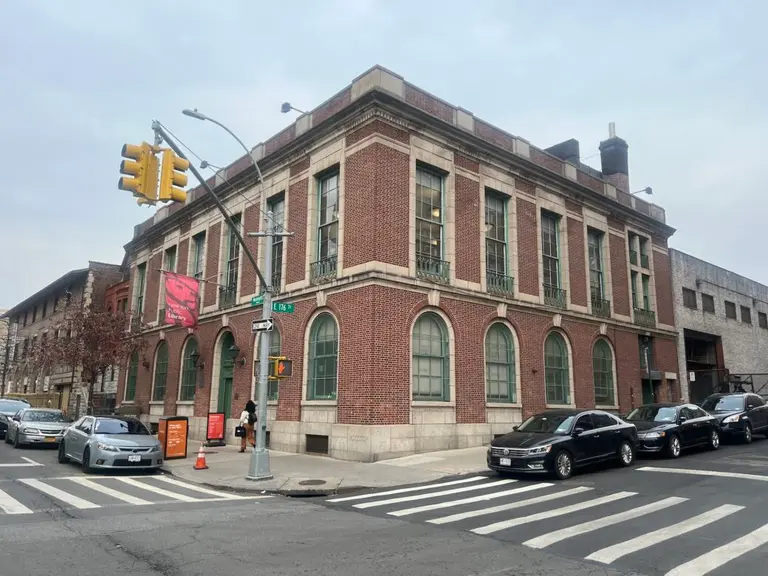
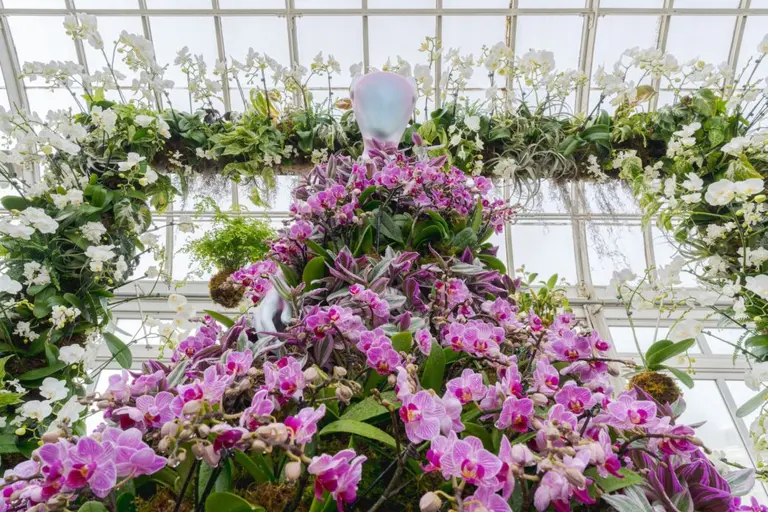
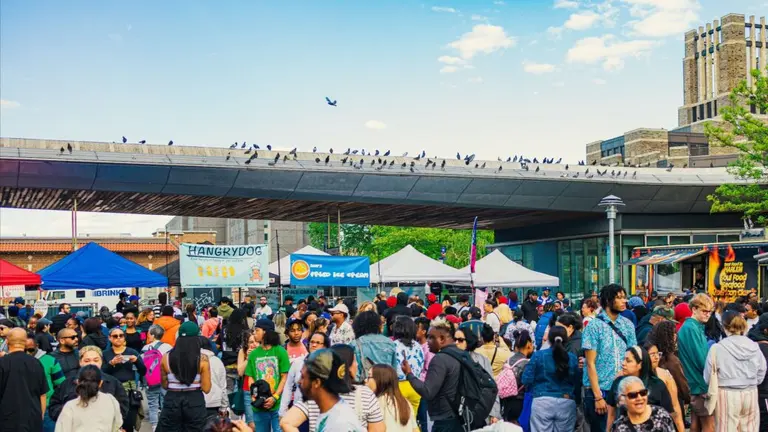











Great exhibit and welcome to the Mott Haven section of the South Bronx Sebastian!